The New Piaget Polo Perpetual Calendar Ultra-Thin
The Polo collection expands its complications offer by launching a perpetual calendar reference in steel.
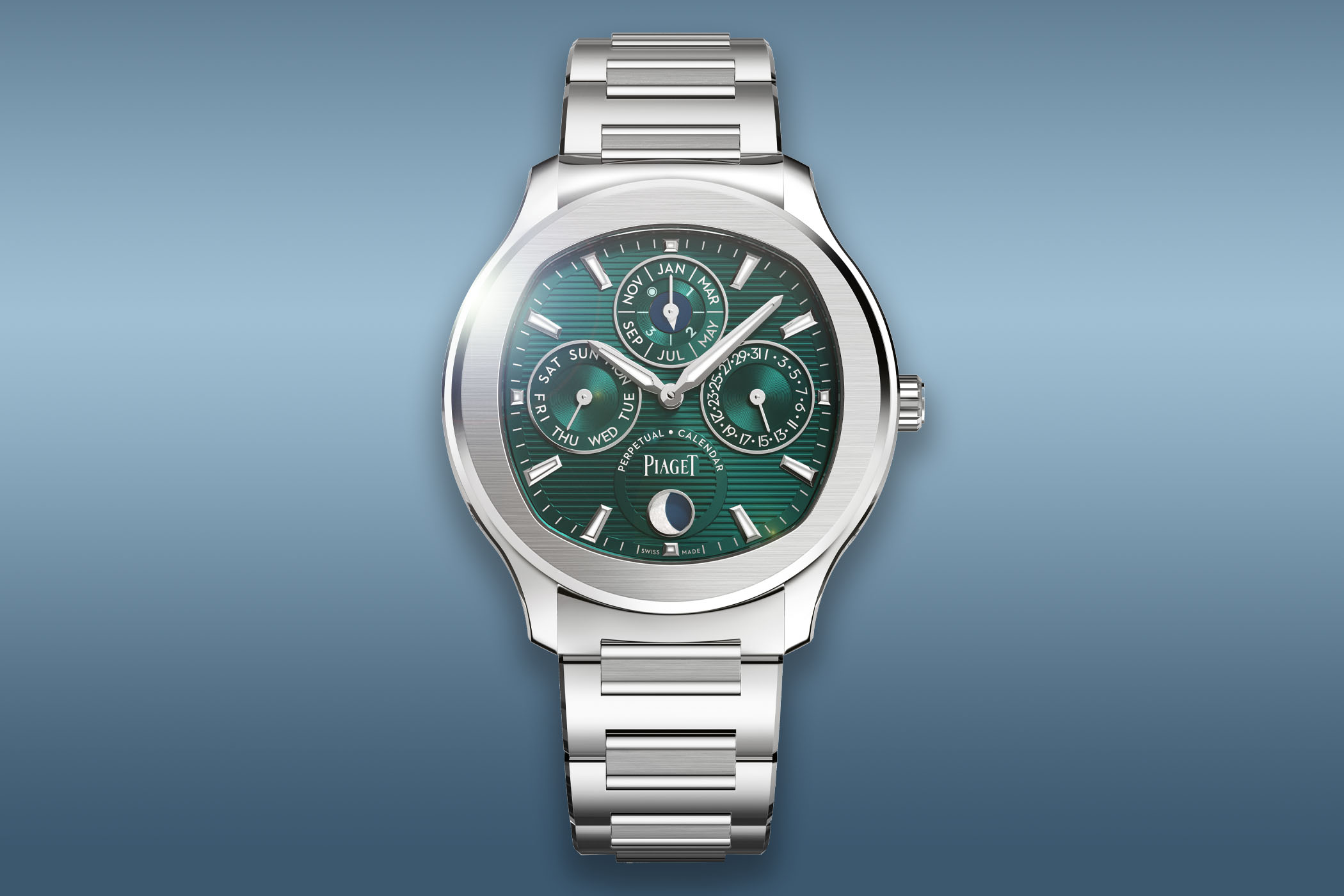
Piaget‘s watches across all the collections often embody bold and creative designs, admired by the public. Still, the brand’s watchmaking history is rooted in creating original and high-precision movements. Since 1874, the manufacture has been producing movements for its watches, and it has been a supplier of the most complex “engines” for many eminent watch brands in Switzerland. For connoisseurs and amateurs alike, Piaget is often synonymous with ultra-thin mechanical movements. The Piaget Polo collection started its life as a sporty alternative but recently moved into ultra-thin watchmaking with the Polo Skeleton. It is now joined by a new high-end model, the Piaget Polo Perpetual Calendar Ultra-Thin.
In 1979 Piaget introduced the Polo, a sporty-chic watch equipped with a 7P quartz calibre. The Polo was a must-have piece in the 1980s and has become the symbol of refined style, a subtle sense of beauty, and a luxurious lifestyle. The Polo collection evolved over the years and was recently updated, but complication-wise offered the time-and-date and the chronograph only and a newly added ultra-thin skeleton. Today, we welcome a perpetual calendar to the Polo family of ultra-thin watches with a moon phase display.
Perpetual calendars can be found in other Piaget collections, but it is the first time a mechanical QP enters the Polo line. Recently, a QP in Polo FortyFive and Gouverneur collections employed the automatic calibre 855P, and Polo Emperador housed the 856P. For the new watch, Piaget developed a new calibre. The new 1255P ultra-thin movement is based on the self-winding ultra-thin 1200P calibre from 2010, inspired in turn by the 12P movement of 1960, which was the world’s thinnest at the time. The 1200P was and still is one of the thinnest movements with automatic winding, measuring only 2.35mm, and powers watches in the Altiplano collection.
Suppose you turn over the Altiplano and the new Polo Perpetual and place them side by side. In that case, the sapphire caseback will let you observe two identical images; only the micro-rotor of the QP is decorated differently. It is blue, with circular Côtes de Genève, and there are fewer markings around the Piaget coat of arms. You guessed it right, the difference between the 1255P and the 1200P is the perpetual calendar module with a moon phase mechanism under the dial, and it adds just a little over 1.5mm to the movement height, to a total of 4mm. The 1255P will provide the watch with about 42 hours of power reserve. It beats to a frequency of 21,600 vibrations/hour and is mechanically programmed to show the correct day-date-month and the leap year until 2100.
The Piaget Polo Perpetual Calendar appears in a typical cushion-shaped stainless steel case with a flat round bezel. It has a 42mm diameter, a height of 8.65mm and 30m water-resistance. For comparison, the Audemars Piguet Royal Oak Selfwinding Perpetual Calendar Ultra-Thin is 41mm x 6.30mm, and the Bvlgari Octo Finissimo Perpetual Calendar is 5.80mm thin. The three models are unique and sophisticated in their aesthetics and presentation of the classic complication, and outright beautiful, skilfully executed, a feast for anyone’s eyes. But I digress.
The dial of the new Piaget model is emerald green (the colour green is familiar to the collection), horizontally striped – a.k.a gadroon pattern – with perpetual calendar sub-counters at 3 o’clock for the date, at 9 o’clock for the weekday, and for the current month at 12 o’clock, with a tiny leap year indicator integrated in the month sub-dial. The moon phase window is positioned at 6 o’clock. To balance the layout, Piaget’s designers opted for the flat ring with a “perpetual calendar” designation, with the “Piaget” text logo and the moon phase inside the circle. The hour and minute hands and the hour indices are coated with Super-LumiNova and shaped so that reading time in the dark is straightforward – to learn what day it is, you would have to wait till the sun gets up.
The Piaget Polo Perpetual Calendar Ultra-Thin features the new interchangeable SingleTouch system to replace the integrated H-link steel bracelet using a practical system with pushers on the back between the lugs; the model also comes with a rubber strap. Both the bracelet and the strap show variations of the gadroons pattern on the dial – as you can see, the bracelet has been slightly redesigned compared to the Piaget Polo Skeleton (mostly the mid-links)
This beautiful watch, which will be part of the permanent collection and isn’t limited, will set you back EUR 60,500, which is a lot. Still, coming from a brand with extraordinary watchmaking prowess that has been setting trends and supporting extravagant and harmonious lifestyles, it is at least to be admired.
For more information, please visit www.piaget.com.

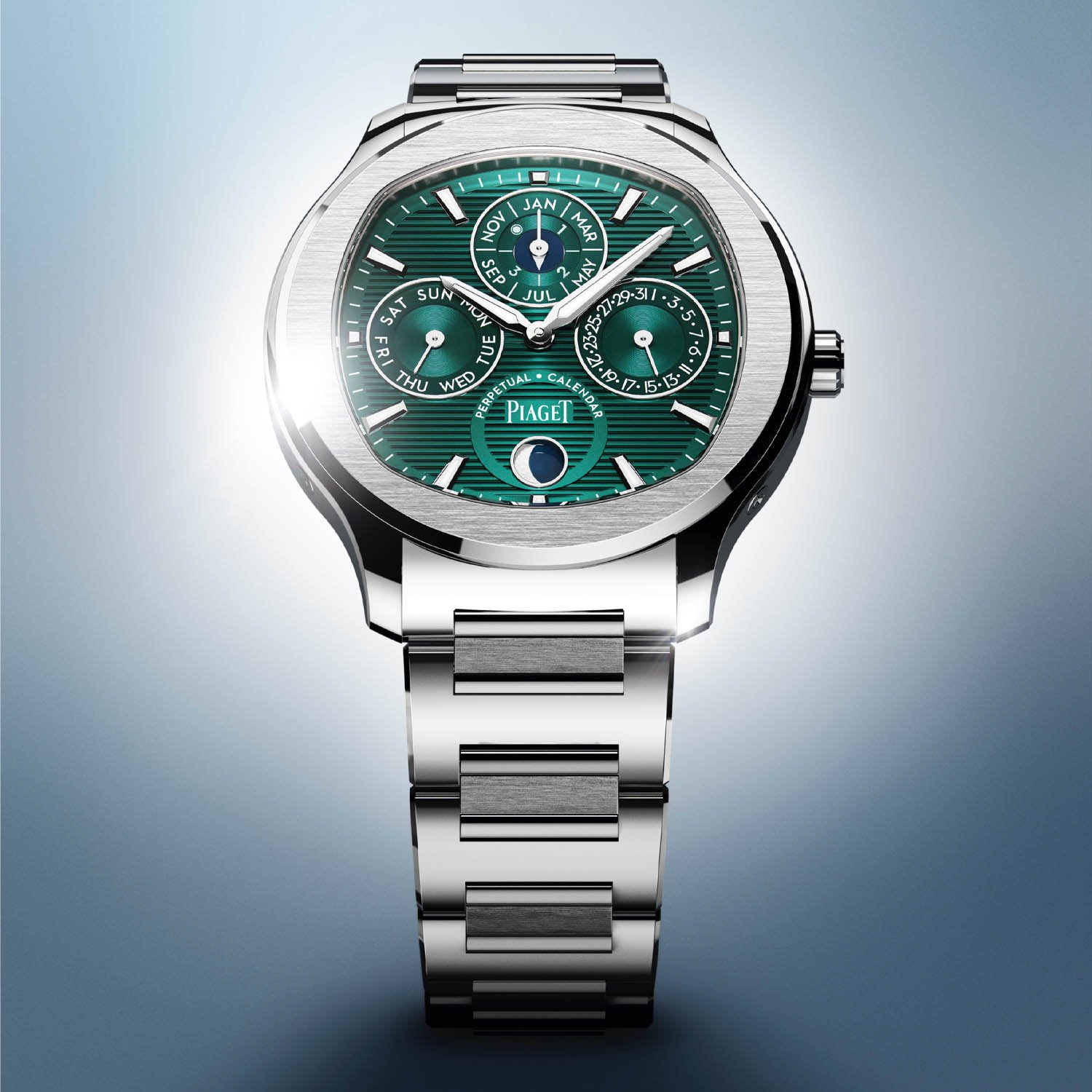
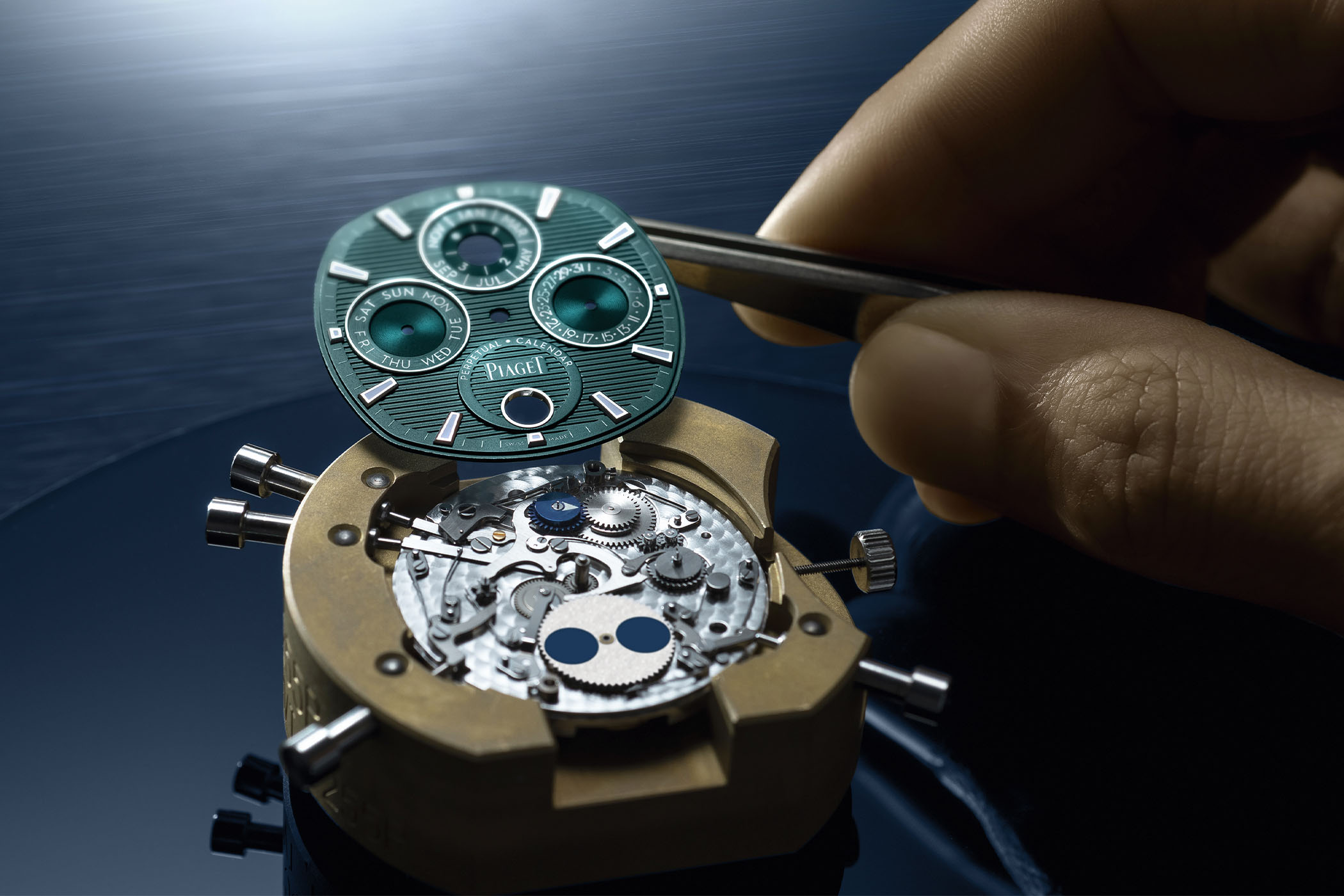

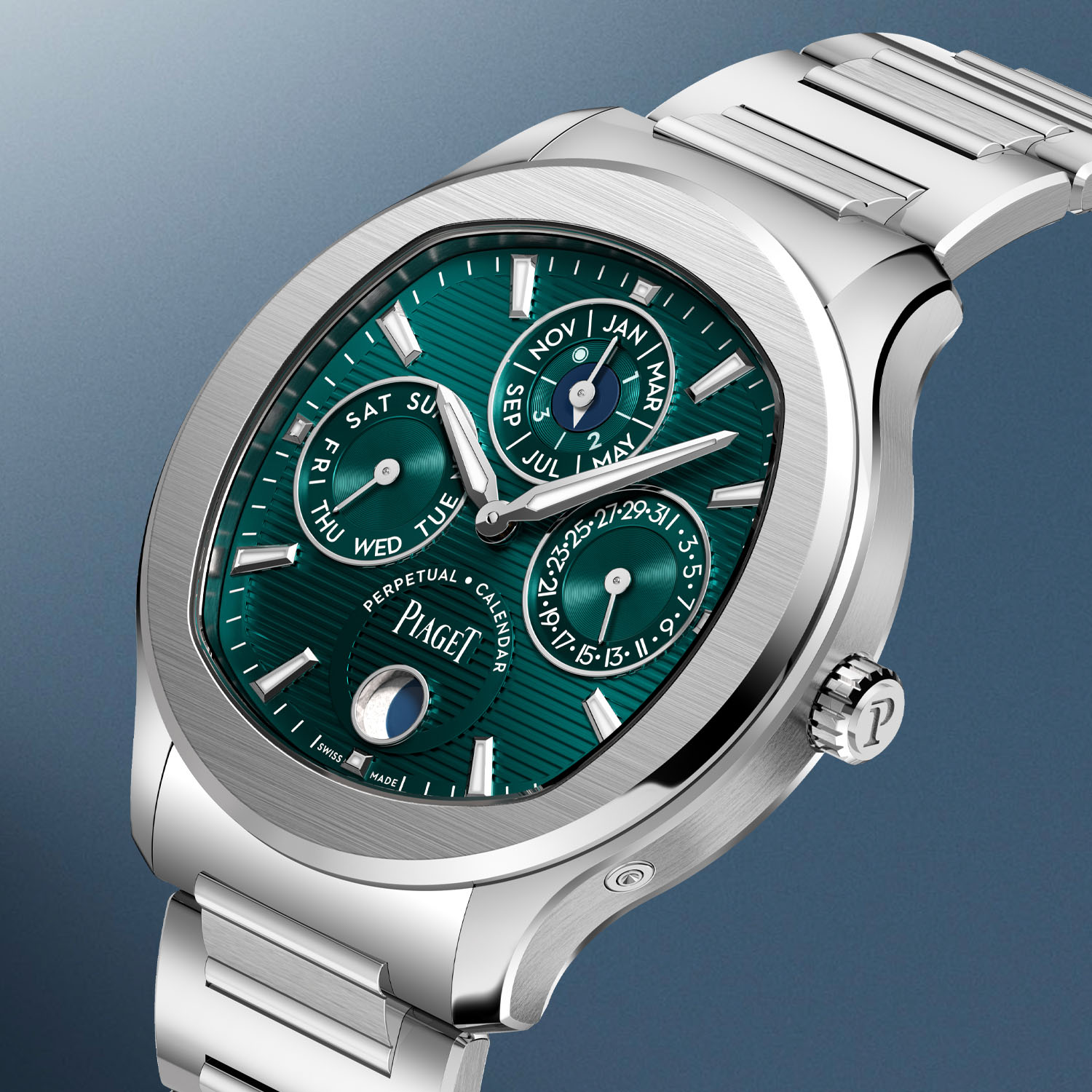

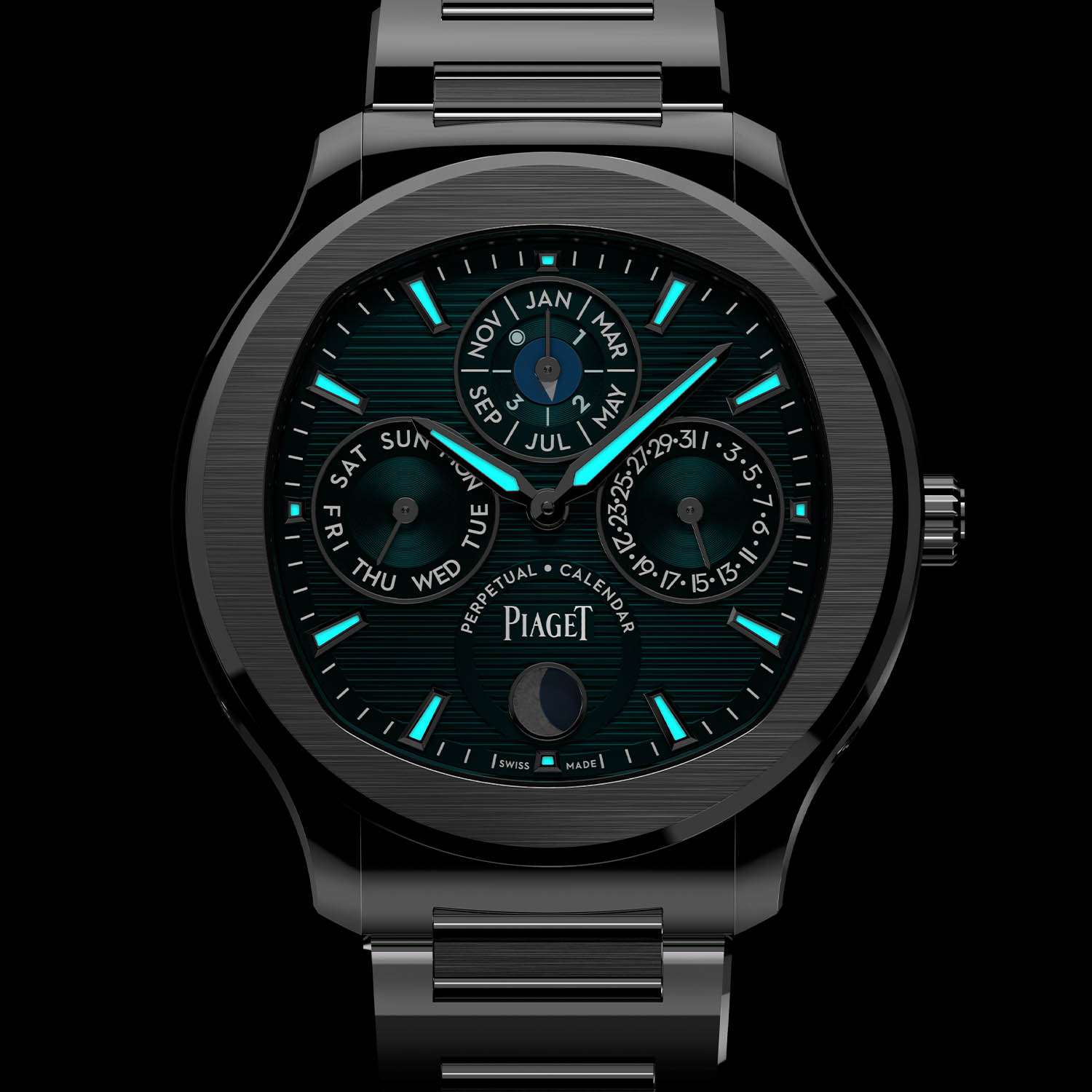
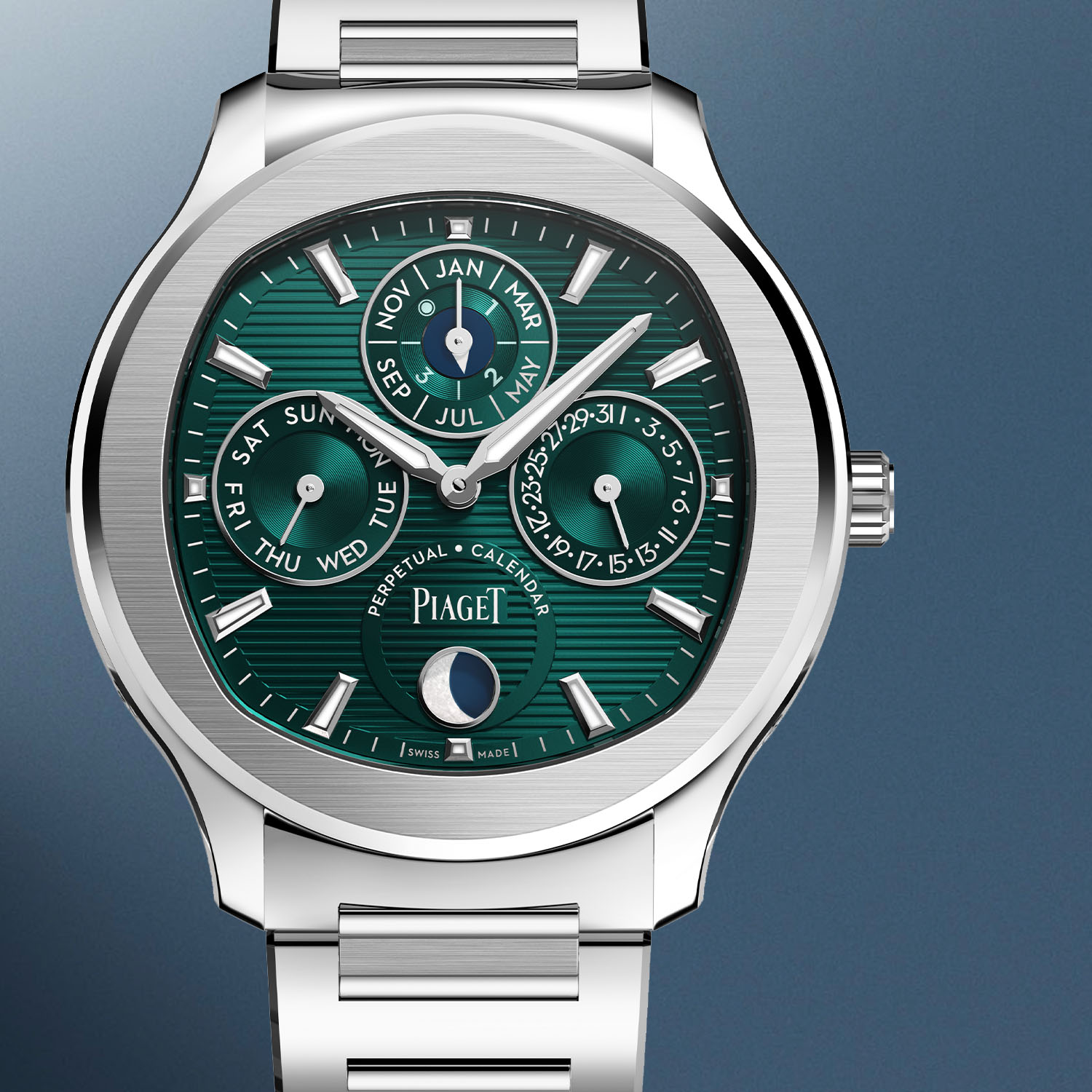
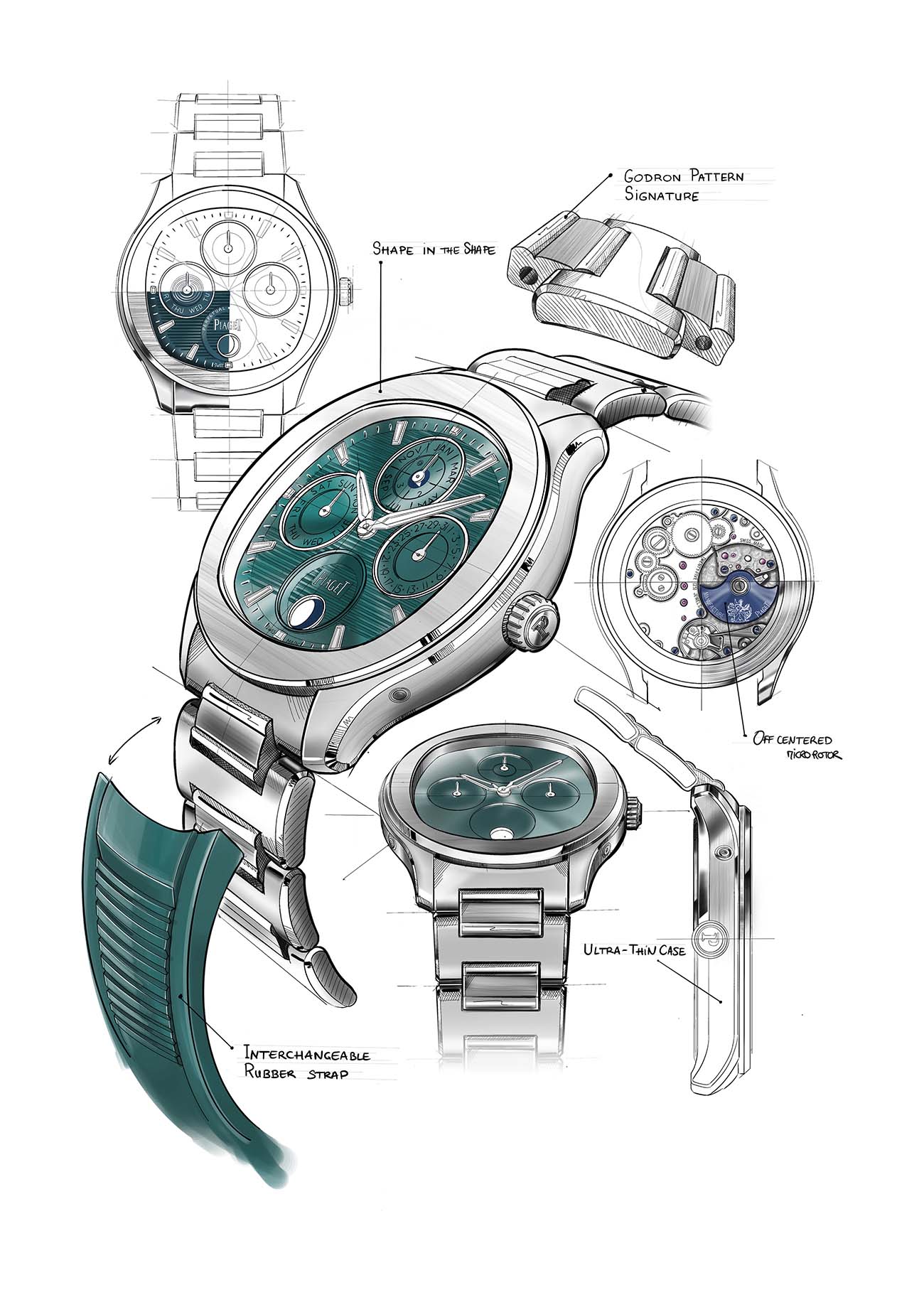
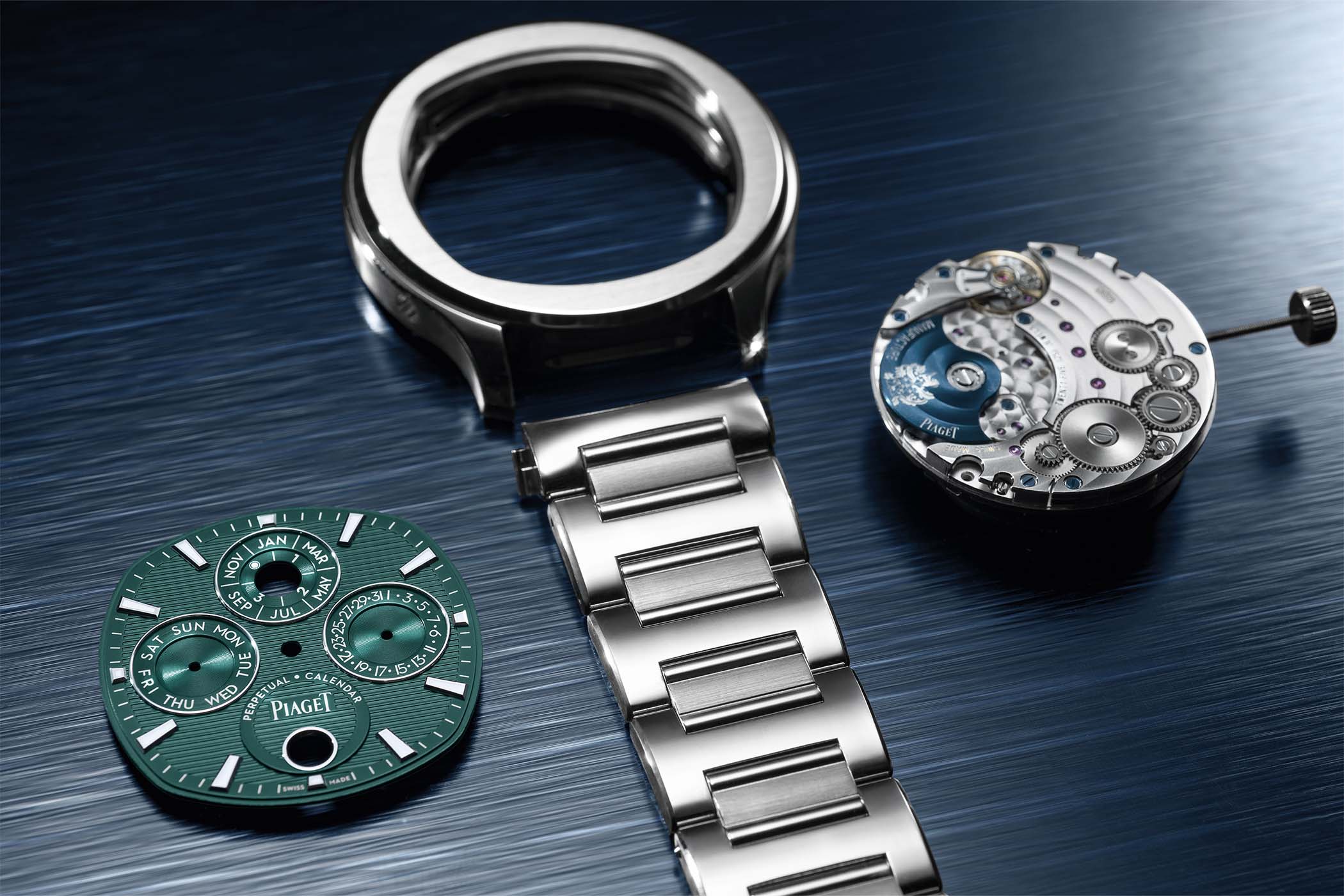



4 responses
Beautifully designed and technically impressive watch. Having a laugh with the price, though. How is this worth €60k, when you can get a gold perpetual calendar from JLC or Glashütte Original for €30k-ish (less if you go for pre-owned), and a steel one from a bunch of different manufactures at €10-15k-ish? I don’t think the movement or case/bracelet finishing are so amazing that they justify the price difference here. Wonder if this is market positioning and brand management, rather than something they expect people to actually pay.
60k stainless steel?? No way.
Considering What your getting for your EURO’s it is a better buy than a Nautilus in design,Functions and quality.
But does the bracelet taper this time?